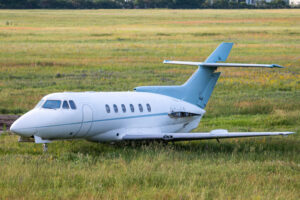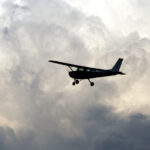Pilot training for smoke in the cockpit gets more realistic
Pilots who experienced the terror of smoke in the cockpit firsthand and lived to tell the tale consider themselves lucky. When smoke engulfs your vision and your instruments vanish, good pilot training could be your only lifeline.
Imagine being unable to see anything, even with goggles on. One pilot had to rely on memory to locate the cabin dump switch amidst the thick smoke. This got me thinking, and now I practice locating switches with my eyes closed. But above all, I take my training seriously.
Dynamic Advanced Training, in partnership with VisionSafe, has brought a groundbreaking training experience to pilots. Using VisionSafe’s Emergency Vision Assurance System (EVAS) and real smoke in the simulator, they recreate the gripping emergency of “smoke in the cockpit.”
With EVAS, pilots can keep their eyes on the instruments and navigation data even in limited visibility caused by smoke. By showcasing this system in the simulator, Dynamic Advanced Training aims to highlight its life-saving potential and encourage pilots to install it in their aircraft.
General Guidelines
Below are some general guidelines for when smoke is encountered in the cockpit. Always refer to your aircraft’s specific flight manual for procedures.
- Identify the Situation: First, verify the presence of smoke or abnormal odors. If smoke is present, proceed to the next step.
- Don Oxygen Masks: Pilots should immediately don their oxygen masks and establish two-way communication with each other. Ensure the mask is set to 100% oxygen.
- Establish Aviate, Navigate, Communicate
- Aviate: Maintain control of the aircraft
- Navigate: Determine the nearest suitable airport for an emergency landing
- Communicate: Declare an emergency with Air Traffic Control (ATC) and communicate your intentions (Communicate).
- Isolate the Problem: Attempt to identify the source of the smoke. Check electrical equipment, cabin systems, and engine indications.
- Execute Emergency Descent, if Required: If the situation worsens and visibility becomes severely impaired, pilots may need to initiate an emergency descent following the aircraft’s specific procedures.
- Prepare for Possible Landing or Ditching: Depending on the severity of the situation and proximity to an airport, prepare the cabin for a possible emergency landing or ditching.
Useful Tips
- Remain calm: In high-stress situations, it’s crucial to remain calm and think clearly.
- Use checklists: Always use the appropriate checklist for the situation.
- Training: Regular simulator training scenarios involving smoke can help pilots react more effectively in real-world situations.
- Maintenance: Ensuring regular maintenance checks can prevent many issues related to smoke in the cockpit.
Remember, the safety of the passengers, crew, and aircraft is paramount. When in doubt, consult with ATC and follow established emergency procedures. Ultimately, smoke in the cockpit is a serious and potentially life-threatening hazard. It’s essential to follow safe piloting practices, keep your aircraft in good condition, use checklists in emergencies, and participate in regular simulator training sessions to reduce the risk of experiencing smoke in the cockpit.
RELATED READING









